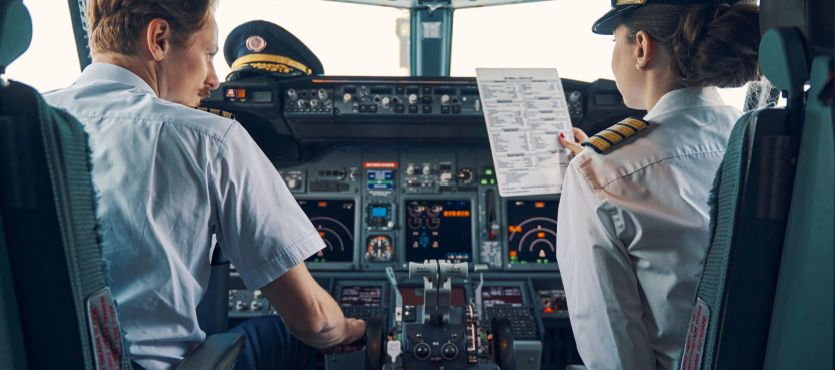Preparing for a flight as a pilot involves several steps and can vary in complexity depending on the type of aircraft, the flight duration, the weather conditions, and other factors. From flight planning to weather briefing and aircraft pre-flight inspection, pilots have to take several preparatory measures before a flight.
Before taking off, it’s crucial for pilots to confirm that the aircraft is in proper working condition and airworthy. If you are a pilot in training and are curious about what goes on in the life of pilots before a flight, here’s a general outline of the steps pilots take to ensure everyone’s safety onboard.
- Weather Briefing
The pilot obtains a weather briefing to gather information about the current and forecasted weather conditions along the planned route and at the destination. This includes information on temperature, wind, visibility, turbulence, and any significant weather phenomena that may affect the flight.
- Flight Planning
Pilots start by reviewing the flight plan. This includes checking weather conditions along the route, calculating fuel requirements, and reviewing any relevant notices to airmen (NOTAMs) for potential hazards or restrictions.
- Weight and Balance Calculation
Pilots need to calculate the aircraft’s weight and balance to ensure it is within safe limits. This involves accounting for the weight of passengers, cargo, and fuel to maintain the aircraft’s stability and control during the flight.
- Pre-flight Inspection
The pilot conducts a thorough pre-flight inspection of the aircraft. This involves visually checking the exterior for any signs of damage or abnormalities, as well as inspecting critical systems and controls inside the cockpit.
- Aircraft Documentation
The pilot reviews the aircraft’s documentation, including the maintenance logbook, airworthiness certificate, registration, and any required documents related to the flight.
- Flight Plan Filing
The pilot files the flight plan with the appropriate authorities, providing details about the route, estimated time of departure (ETD), estimated time of arrival (ETA), and other pertinent information.
- Fueling
If the aircraft needs fuel, the pilot coordinates with ground personnel to ensure the aircraft is properly fueled for the flight.
- Briefing with Crew and Passengers
If multiple crew members or passengers are on board, pilots provide a safety briefing to inform them about important safety features, seatbelt usage, and emergency procedures.
- Clearance and Communication
Before departure, the pilot contacts air traffic control (ATC) to obtain clearance and receives instructions regarding the departure route, altitude, and initial heading.
- Avionics and Instrument Checks
The pilot verifies that all avionics and instruments necessary for the flight, such as radios, navigation equipment, and autopilot, are functioning correctly.
- Flight Deck Setup
The pilot sets up the flight deck, ensuring that all required documents, charts, navigation tools, communication devices, and instruments are in place and functioning correctly.
- Taxi and Run-up
The pilot taxis the aircraft to the designated runway and performs a run-up (a final engine and system check) before takeoff.
- Takeoff Clearance
Once everything is confirmed, the pilot requests and receives takeoff clearance from air traffic control and initiates the takeoff procedure before safely lifting the aircraft off the ground.
Final Take
It’s worth noting that the specific steps and procedures may vary depending on the type of aircraft, the regulations of the aviation authority, and the airline’s standard operating procedures. Regardless of these variations, safety is always the top priority for pilots before and during every flight.
If the idea of becoming a pilot sounds enticing, the time couldn’t have been better to take your first steps. The aviation industry is booming right now providing a lucrative platform for young enthusiasts to shape enriching careers. If you wish to tap into this industry or want to learn more about aviation career, our experts at Airlink Flight School can guide you. Call us today!

